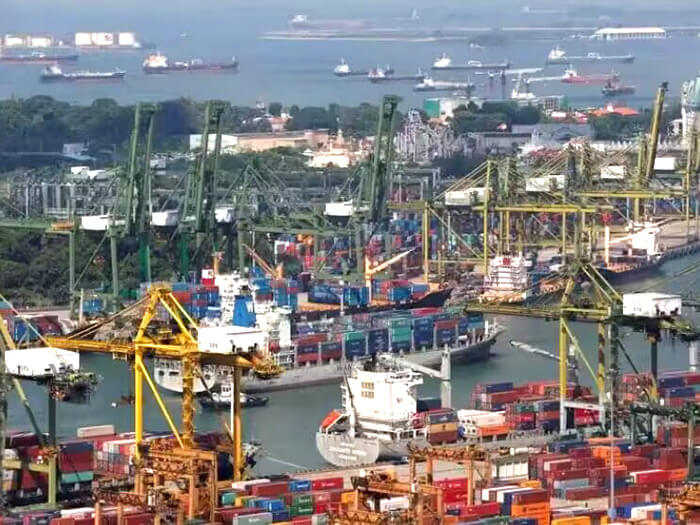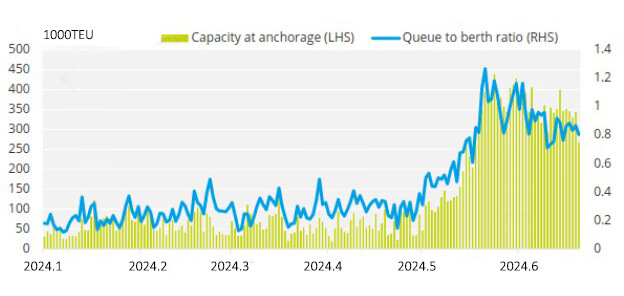The Port of Singapore, located near the Strait of Malacca, is one of the busiest shipping connecting Europe, the Middle East, and China. It plays a crucial role on the global shipping stage.
Recently, due to crisis in the Red Sea, many shipping companies have had to adjust their routes to avoid the Suez Canal, an important shipping channel. A large number of cargo ships have opted to sail via the Cape of Good Hope, making the Port of Singapore a critical waypoint for these vessels.
As a result, the utilization rate of the port’s terminals has surged. Drewry’s Data show that in the first five months of this year, the container throughput of the Singapore Port has reached 16.9 million TEUs, an 8% year-on-year increase, and the average unloading volume of the port has increased by 22%.
According to the director of maritime services at Drewry, the utilization rate of Singapore’s container terminals has reached nearly 90%, far exceeding the optimal rate of 70%. This indicates that the terminal has reached its limit, and any additional ships could lead to serious congestion.
In addition to the Red Sea crisis, this year’s shipping peak season has also arrived earlier than expected, increasing the pressure on the port’s cargo handling capacity and exacerbating congestion. Vessels are unable to dock on time, resulting in significant delays in shipping schedules and increasing pressure on freight rates. If the port congestion problem is not resolved in the short term, spot shipping rates may continue to rise.
Although the Singapore Port Authority and port operator PSA have reactivated old terminal facilities, such as the Keppel Terminal, and increased staffing and handling capacity, it will take time to fully alleviate the congestion in the short term.





